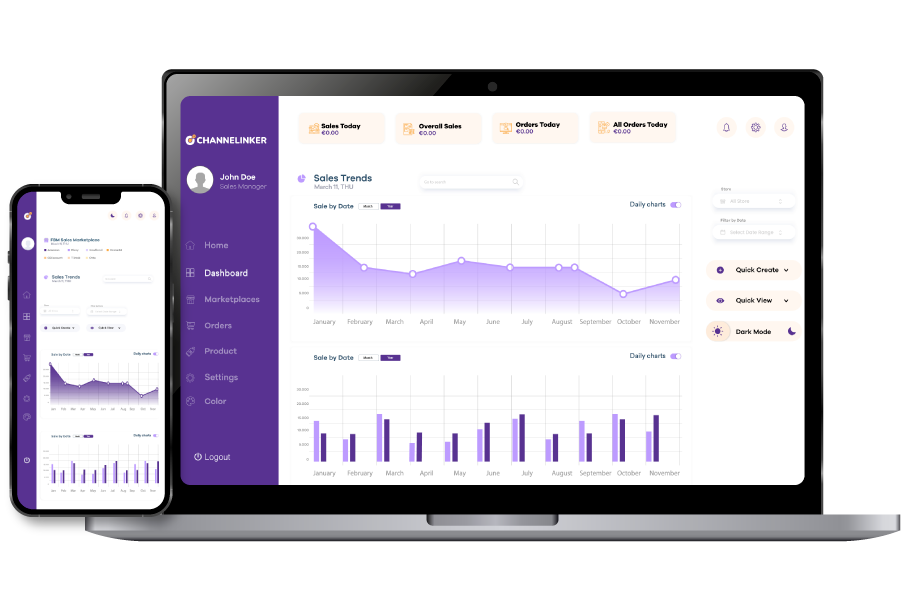What Is Annual Recurring Revenue ARR?

Annual Recurring Revenue (ARR) is a vital business metric that measures the predictable and recurring revenue of a company over a year. ARR is commonly used by subscription based and Software-as-a-Service (SaaS) companies, providing a clear and unambiguous view of a company’s revenue health, stability and growth potential. ARR Annual Run Rate is the recurring revenue earned from subscriptions or contracts and is subsequently annualized, making it an effective tool for evaluating long-term financial performance.
ARR refers to recurring revenue streams that are anticipated to continue over a year, excluding one-off payments, variable charges, and non-recurring income. For example, a customer that subscribes to a general SaaS platform for $1,000 per year would add $1,000 in ARR to the company. ARR provides businesses and investors with a stable and reliable method for tracking revenue trends and projecting future earnings.
Who Should Use the Annual Recurring Revenue Model?
The ARR model is particularly beneficial for businesses that rely on recurring revenue streams. Companies in the following industries often use ARR as a key performance indicator (KPI):
- Subscription-Based Businesses: ARR is crucial for companies offering subscription services, such as SaaS providers, streaming platforms, and membership-based organizations. It helps track revenue consistency and customer retention rates.
- Managed Service Providers (MSPs): Businesses providing IT or consulting services on a subscription basis benefit from ARR as it helps measure their ability to maintain and grow their client base.
- Telecommunication Providers: Phone, internet, and cable service providers often use ARR to understand the revenue generated from long-term contracts.
- Media and Content Platforms: Online education platforms, digital publications, and content subscription models use ARR to evaluate the revenue impact of their subscriber base.
- Investors and Stakeholders: ARR is a critical metric for venture capitalists, private equity firms, and other investors assessing the financial health and growth potential of a business.
How Do You Calculate ARR (Annual Recurring Revenue)?
ARR is calculated by determining the recurring revenue from a specific period and multiplying it by the respective period to get the annual ARR. Here’s the formula:
ARR = Total of Monthly Recurring Revenue(MRR) * 12
Steps to Calculate ARR:
Calculate Monthly Recurring Revenue (MRR): Including all recurring revenue from subscriptions or contracts for a specific month. This does not include one-time fees, set-up fees, or usage-based costs.
To calculate ARR, annualize the MRR by multiplying it by 12.
Example Calculation: If a Software as a Service company has $50,000 in monthly recurring revenue:
MRR = $50,000
ARR = $50,000 × 12 = $600,000
Some other factors to consider in ARR calculations include:
- Upgrades and Expansions: If customers upgrade their subscriptions or purchase add-ons, the additional recurring revenue should be included in the ARR.
- Churn: Deduct revenue lost from cancellations or downgrades to arrive at an accurate ARR figure.
- New Customers: Include recurring revenue from new customers acquired during the year.
Why Is ARR Important?
Here are several reasons why ARR is a critical metric for businesses and stakeholders:
- Predictable Revenue: ARR represents a more stable source of revenue, allowing for better predictions of future earnings and more accurate budgeting for future initiatives.
- Business Growth Insights: ARR growth provide businesses valuable insights into their customer acquisition and retainer performance as well as areas for opportunities to upsell and expand.
- Investor Confidence: Investors like ARR as a good measure of a company’s financial health and long-term profitability potential. An increasing ARR is often a sign of a healthy and scalable business model.
- Customer Retention: ARR can help to identify patterns of customer behavior, such as retention and churn rates. A stable or increasing ARR indicates healthy and recurring customer loyalty.
- Benchmarking: Hence, through ARR-compared statistics and industry standards, companies can understand what their ARR should target for their respective sector.
- Operational Planning: ARR helps businesses to align their operational strategies — like marketing and product development — with their revenue goals.
The Exclusions of Annual Recurring Revenue
While ARR is a comprehensive metric, it focuses exclusively on predictable, recurring income. The following revenue sources are excluded from ARR:
- One-Time Payments: Revenue from setup fees, onboarding charges, or one-time consulting services is not included, as these are not recurring.
- Variable Charges: Usage-based fees or overage charges that fluctuate month-to-month are excluded unless they are predictable and recurring.
- Non-Recurring Revenue: Revenue from product sales, hardware purchases, or any other one-time transactions is not factored into ARR.
- Discounts and Promotions: Temporary discounts or promotional offers that do not reflect regular pricing are excluded to ensure accuracy.
- Contract Cancellations: Revenue from contracts that are terminated or downgraded is deducted from ARR, reflecting the impact of churn.


